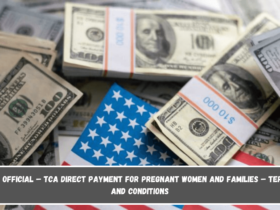The Child Tax Credit (CTC) is a critical tax benefit intended to help low- and middle-income families in the United States. This credit benefits an estimated 48 million households by assisting families in managing vital expenses like as food, housing, and education for their children.
The Child Tax Credit allows taxpayers with dependents under the age of 17 to drastically reduce their tax liability. This non-refundable credit directly reduces your tax burden on a dollar for dollar basis.
For the 2025 tax year, the Internal Revenue Service (IRS) has set the maximum credit amount at $2,000 per kid, with up to $1,700 refundable. This means that families with little or no tax burden might still get a portion of the credit as a refund.
How the Child Tax Credit works
The income levels for the Child Tax Credit remain unchanged in 2025. Married couples filing jointly can earn up to $400,000 without affecting their credit, whereas single filers and other filing statuses have a limit of $200,000.
Basic eligibility requirements
To claim the kid Tax Credit, you must meet certain conditions about the kid, your relationship with the child, and your household income. Here is a breakdown of the key eligibility rules:
- Child’s age: The dependent must be under 17 years of age at the end of the tax year.
- Relationship: The child must be a biological, adopted, or stepchild, or a direct descendant such as a grandchild, sibling, or niece/nephew.
- Residency: The child must have lived with you for more than half of the tax year, with exceptions for temporary absences, births, deaths, or cases involving divorced or separated parents.
- Economic dependency: The child must not have provided more than half of their own financial support during the tax year.
- Social Security Number (SSN): The child must have a valid SSN issued by the Social Security Administration by the tax filing deadline, including any extensions.
- Joint filing restrictions: The child cannot file a joint tax return, except to claim a refund of withheld taxes or estimated tax payments.
- Citizenship status: The child must be a U.S. citizen, U.S. national, or permanent resident.
How to claim the Child Tax Credit
To claim the Child Tax Credit, fill out the worksheet found in the IRS instructions for Form 1040 or 1040-SR. This worksheet allows you to precisely determine the amount of credit you are qualified for.
Once the credit amount has been calculated, it is applied straight to your tax return. Depending on your tax circumstances, it may lower your tax liability or boost your refund. This shortened approach guarantees that qualifying families get the financial assistance they require.

Key considerations for 2025
While the income limitations and credit amounts for the Child Tax Credit remain identical, there are a few things to consider when you file your 2025 tax return:
- Refundable portion: Up to $1,700 of the credit is refundable, which is especially beneficial for families with limited or no tax liability.
- Social Security Number requirement: Ensure that your child has a valid SSN before filing your return to avoid delays or ineligibility.
- Changes in family circumstances: If you experienced life changes during the year, such as a move, divorce, or the birth of a child, these could affect your eligibility or the amount of credit you can claim. Review your situation carefully.
Benefits of the Child Tax Credit
The Child Tax Credit is one of the most efficient ways to help families with little children. By lowering the tax burden and delivering a refundable component, the CTC gives households more money to cover crucial expenses. These monies can be used to promote home stability, offer nutritious meals, or invest in a child’s education, all of which benefit children and families in the long run.
For many families, the Child Tax Credit provides a financial safety net, especially during difficult economic times. It not only relieves immediate financial stress but also creates a more stable atmosphere in which to raise children.
Final thoughts
The Child Tax Credit is a cornerstone of financial support for millions of American families. To take full use of this benefit, you must first understand the qualifying conditions and ensure that you meet all of them.
As you prepare to claim the Child Tax Credit on your next tax return, gather the appropriate paperwork and familiarise yourself with the IRS criteria. This will allow you to traverse the process smoothly and gain the full benefit. This credit has the potential to significantly improve your home budget, offering much-needed relief and allowing your family to thrive.
Also See:- Delivery Schedule for Social Security Checks of Up to $4,800











Leave a Reply